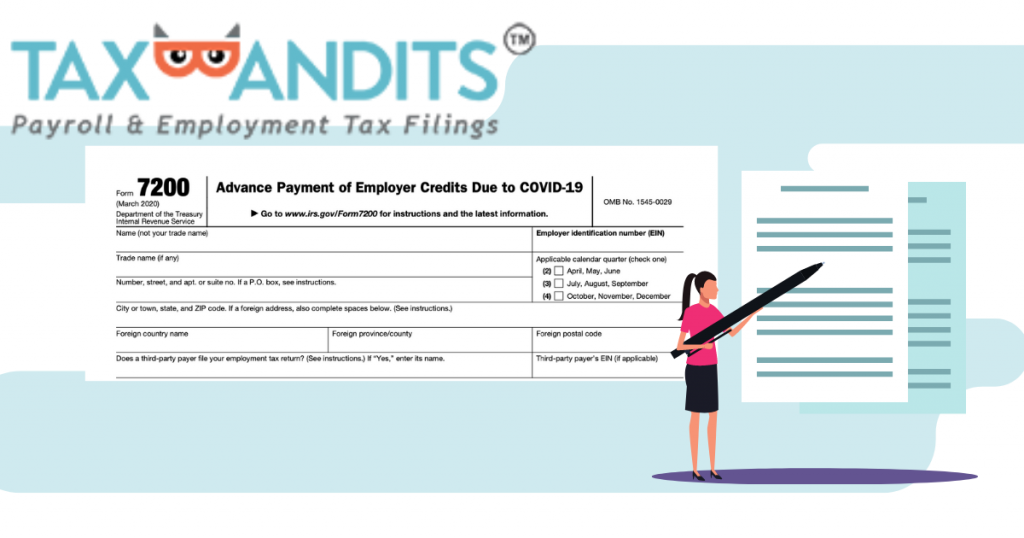IRS Guidance on Form 7200: Sick and Family Leave Tax Credits
reading time: 11 minute(s)

As the deadline to file Form 941 for the second quarter approaches, you may have many questions. You’re not alone, many business owners are seeking additional information when it comes to the new changes due to COVID-19. It is not often that the IRS creates a completely new form like the Form 7200 or completely overhauls the quarterly employment tax return, Form 941.
At TaxBandits, our goal is to provide you with the latest and most comprehensive information to help you complete your IRS filings. To help you better understand the sick and family leave credits, we have compiled the key information you need based on the IRS guidance for these credits.
The Basics…What are the credits for qualified sick and family leave?
Under the Families First Coronavirus Response Act, employers with 500 employees or less must provide their employees with paid time off. Eligible employers can claim tax funds for these wages from the time period of April 1, 2020 to December 31, 2020.
How can employers claim these credits?
Employers can claim their credits on their Quarterly Employment Federal Tax Return, Form 941 and reduce their federal tax deposits to cover these credits. The form has been revised to meet these new filing requirements.
The IRS created the Form 7200 back in April for employers who wish to request an advance on these credits. This form is ideal for those employers whose share of employer taxes are not enough to cover these credits. This form can be filed as many times as it is needed throughout a given quarter.
How are these credits refunded?

These credits are fully refundable, but how does this work? Well, employers will need to keep a record of all eligible wages that they pay out to employees, then reduce their tax deposits by this amount. If the cost of these wages is greater than your total tax deposits, you will receive a refund from the IRS.
This works similarly to overpaying your tax deposits, the IRS will credit you the amount that your qualified paid sick and/or family was in excess of your tax deposits.
Will employers receive a penalty for reducing tax deposits?
No, the IRS will not penalize you for reducing your tax deposits in anticipation of your tax credits. When your business files its Form 941 for the next quarter, this information will be recorded. The IRS will know that you are reducing your tax credits, not simply making incorrect payments.
What about employee retention credits?
Qualified paid sick and family credits and the employee retention credits are not mutually exclusive. If you are also eligible for the employee retention credit, you are able to take advantage of it.
Be sure that you are not “double-dipping” with your tax credits. The employee retention credit is equal to up to 50% of qualified wages, this does not include wages that you have claimed the family or sick leave credits.
What records should I keep?
As an employer, you must document all of the time off requested from your employees. When it comes time to complete your Form 941 or request an advance on your credits using Form 7200, this information is crucial.
Be sure to keep clean records that substantiate your employees’ paid leave related to COVID-19. By maintaining your records meticulously now, you will have an easier time filing and keeping track of your tax deposits down the road.
After filing Form 7200 and Form 941, you will need to keep these as a part of your records as well.
Need a solution?
TaxBandits is here to help you with your IRS e-filing needs. If you are feeling overwhelmed by the new Form 7200 or the completely revised Form 941, that’s just another reason to file with TaxBandits.
Our cloud-based software will walk you through these forms so that you don’t miss a beat. When you e-file with TaxBandits, you can count on our support team to assist you with any questions that you may have during the process. That’s just another great reason to start filing today.



Leave a Comment